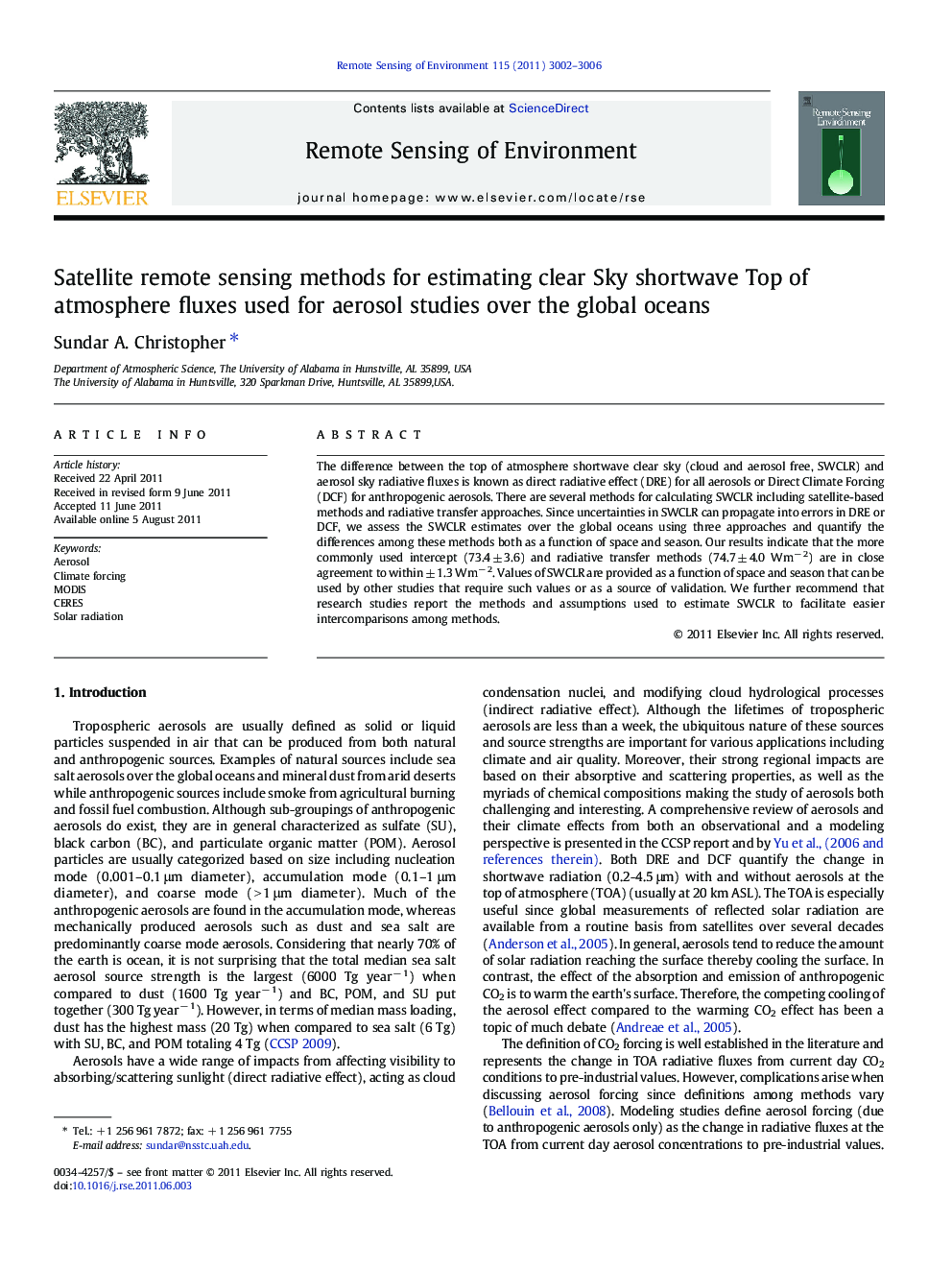| Article ID | Journal | Published Year | Pages | File Type |
|---|---|---|---|---|
| 4459454 | Remote Sensing of Environment | 2011 | 5 Pages |
The difference between the top of atmosphere shortwave clear sky (cloud and aerosol free, SWCLR) and aerosol sky radiative fluxes is known as direct radiative effect (DRE) for all aerosols or Direct Climate Forcing (DCF) for anthropogenic aerosols. There are several methods for calculating SWCLR including satellite-based methods and radiative transfer approaches. Since uncertainties in SWCLR can propagate into errors in DRE or DCF, we assess the SWCLR estimates over the global oceans using three approaches and quantify the differences among these methods both as a function of space and season. Our results indicate that the more commonly used intercept (73.4 ± 3.6) and radiative transfer methods (74.7 ± 4.0 Wm− 2) are in close agreement to within ± 1.3 Wm− 2. Values of SWCLR are provided as a function of space and season that can be used by other studies that require such values or as a source of validation. We further recommend that research studies report the methods and assumptions used to estimate SWCLR to facilitate easier intercomparisons among methods.
► Clear sky Fluxes from satellite. ► Global ocean estimates. ► Robust estimates of Aerosol Climate forcing.
